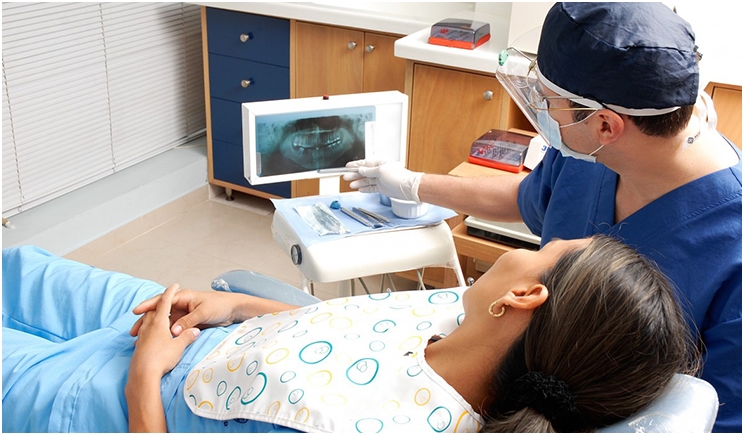
I recently wrote a column criticizing the practice of patient churning and its potential for abuse at federally qualified health centers (FQHCs), prompting senior medical advisor Dr. Ted Wymslo of the Ohio Association of Community Health Centers to draft a response in their defense.
I wish to thank Dr. Wymyslo for his dedication to FQHCs. He provides an outstanding and detailed description of how Medicaid pays FQHCs through encounter fees, which are unavailable to private sector Medicaid providers.
Dr. Wymyslo contends that the unlawful practices of those practitioners who cheat the system through patient churning—bringing patients back for multiple visits for treatment that could be accomplished in a single visit, creating multiple billing opportunities—do not represent the majority of clinicians at FQHCs. We fully agree on that. But we do disagree about how widespread the problem is.
In my previous column, I cited examples from the states of New York, Washington, and Oklahoma where state and federal prosecutors reached settlement agreements with FQHCs for alleged unlawful patient churning. The scope of these investigations and alleged wrongdoing was not trivial.
The National Network for Oral Health Access (NNOHA) has described the methods, means, and negative outcomes related to FQHC dental patient churning. Dentists who work in public health recognize the problem of FQHCs abusing encounter fees, which result in frustrated patients and staff, as well as cheated taxpayers. The NNOHC has never said that patient churning was the norm at most FQHCs. Unfortunately, dental patient churning is troubling enough for public health leadership to openly address this illegal activity.
The reputations of public health dentists also are of concern. In 2012, the ADA published an article from a doctor who suffered demeaning insults from colleagues as a “patient churner.” Obviously, the patient churning associated with FQHCs is recognized with ill regard within the dental profession.
In communicating with this dentist, who has spent her career serving in public health with great integrity, I learned she would never tolerate such abuse of her patients. She would never work in such an unethical if not criminal environment.
Unfortunately, that’s not the case for all doctors, especially junior colleagues who may be overly naïve and under the pressure of burdensome student debt obligations. Clinical dental protocols and scheduling are often outside the control of frontline doctors.
Another area of agreement I have with Dr. Wymyslo is the substantial pressure of economic overhead associated with operating a dental clinic. I fully appreciate that as devalued as the current dental Medicaid fee structure is, FQHCs must rely upon encounter fees for fiscal viability. I suggest allowing dental Medicaid fees to float to usual, customary, and reasonable rates and tossing the entire FQHC encounter fee compensation structure. This billing methodology would eliminate incentives for patient churning.
Dental professor Dr. William Riley of Arizona State University suggests bundling preventive dental services, including radiographic images and the doctor’s examination, into a single patient encounter at a single remunerated fee. This proposal was widely disseminated in the dental public health community, and Dr. Wymslo’s response seems to reinforce the merits of this methodology.
Riley’s ideas struck a chord nationally because patient churning at FQHCs is, in fact, a widespread issue. Too many nonprofit clinics are generating unnecessary patient encounters and subsequent unnecessary billings paid by taxpayers. Obviously, this is not the case for Dr. Wymyslo’s clinics, or perhaps most FQHCs. Regardless, problems are real.
Furthermore, it’s not the doctors and their clinical teams who generally profit from ill-gotten gains. Invariably, we see clinic directors with outrageous salaries and compensation packages, often deep into six figures annually. One executive earns seven figures. These clinics are structured as IRS nonprofit 501c entities, not Fortune 500 companies. Again, it’s not the majority, but abuses are out there.
Dr. Wymyslo seemed amazed at a figure of more than $400 per dental patient encounter at some FQHCs. This number is real. Readers from other areas of the nation have confirmed it. In fact, Dr. Wymyslo’s dental encounter fee of $160 for Ohio dental clinics was the lowest I’ve seen. I certainly did not review all 50 states for their FQHC/state negotiated dental encounter fees, although that might be a highly valid study for the US Health and Human Services Office of Inspector General.
Denial of a problem is not a solution to a problem. Alerting the public and the dental profession to very real avenues of fraud in our public health sector is not condemnation of all clinical protocols and doctors within nonprofit FQHCs. Most FQHCs, but not all, provide ethical and honorable service to the disadvantaged. In the long term, if the rotten apples aren’t removed from the bunch, you won’t even be able to make applejack.
Unfortunately, it’s not simply one or two bad apples. Every taxpayer dollar lost through fraud, waste, and abuse represents another dollar not serving the needs of the underprivileged. So, let’s get to work and clean out the violators.
Dr. Davis practices general dentistry in Santa Fe, NM. He assists as an expert witness in dental fraud and malpractice legal cases. He currently chairs the Santa Fe District Dental Society Peer-Review Committee and serves as a state dental association member to its house of delegates. He extensively writes and lectures on related matters. He may be reached at mwdavisdds@comcast.net or smilesofsantafe.com.
Related Articles
Don’t Condemn All FQHCs for the Unethical Behavior of a Few
FQHCs Churn Patients in a Big Scam
Report Recommends Policy Changes to Improve the Oral Health Workforce











